|
In this issue TAME YOUR TECH: Reviewing your licensing options Additional articles in the PLUS issue PUBLIC DEFENDER: Apple has been analyzing your photos since September 2024 WINDOWS 11: What Windows 11 24H2 offers beyond bugs WINDOWS 11: Making sense of Settings in Windows 11
TAME YOUR TECH Reviewing your licensing options
By Susan Bradley • Comment about this article Can you get a license for that? With the upcoming end of life of Windows 10, I’m often asked why I’m not recommending that you look for and install the long-term servicing channel (LTSC) version of Windows 10 or Windows 11. LTSC is a version of Windows 10 that was designed for devices that require minimal changes over time. It is primarily used in environments where stability and consistency are crucial, such as medical devices or industrial machinery. It is not available to the public and can be purchased only through volume licensing. It’s a platform that is intentionally not bloated, and it comes with fewer pre-installed apps, such as Microsoft Store, Cortana, and Edge (until the 2021 version). While it gets regular security updates, it does not get feature releases. Recently I had an online discussion with someone who pointed out that this was an alternative to migrating to Windows 11. Mind you, this person was not a typical AskWoody reader. He indicated that the LTSC version was easily available from a webpage that had been discussed in various forums and on Reddit. I told him that while it’s technically possible to install it on any hardware that can support Windows 10, it is not legally possible to do so — no license. Volume licensing allows organizations to purchase and manage software licenses in bulk for multiple computers or users. This approach is designed to simplify the licensing process and reduce costs compared with purchasing individual licenses for each device or user. You can’t purchase this type of license if you are not a business. Most of our readers will not qualify for the LTSC version. I cannot recommend it. Purchasing a Windows 11 license
Be careful when purchasing Windows and Office licenses. I constantly see advertisements about cheap versions of Office. Many of these versions are not legitimate. One type involves legitimate educational licenses that have been stolen from universities but were unused. Thus the product keys will work, but do not represent legitimate licenses. When looking at a brand-new computer, many times the consumer PCs you see in big-box stores will be sold only with the Windows Home edition. I remain a fan of Windows Professional edition because it provides a greater ability to control updates and BitLocker, and makes it easier to log into a local account. If you purchase Windows Home edition, you can easily convert it to a Professional version by going online and purchasing an upgrade key. This can usually be done within Settings. This is also an area fraught with potential licensing traps. I continue to see recommendations for vendors that sell inexpensive Windows licenses. The logic provided by such vendors is that the license keys validate and therefore the products must be legitimate. There are also some gray areas in Microsoft’s legitimate licensing. For many years, those of us handling server admin duties would joke that some products, such as Exchange and other enterprise services, were effectively on the honor system. It appears that the licensing system in such products was a bit loose. We would pay for a certain number of licenses, but if we went over that limit, inadvertently or on purpose, all systems would continue to function. I’ve also seen this on the consumer side. For example, I know of instances of Office Home and Student edition, ostensibly restricted to that specific environment, being used in small businesses. The software clearly has no method to check where it is being used. This applies to individual copies, not the licenses provided by an educational institution, such as for Microsoft 365. There are many reasons why Microsoft is increasingly moving to a subscription model. Perhaps the most important is that subscriptions offer Redmond much more control over licensing as opposed to one-time purchases. Even so, I know that education subscriptions are still abused. Piracy
For years, Microsoft emphasized that piracy was a problem. It urged us to confirm proper licenses, especially small businesses, to ensure that we were properly licensed for our software. Aiding and abetting is the Business Software Alliance (BSA), an organization specifically designed to put fear in the hearts of businesses. Based on a report, often from a disgruntled employee, BSA would conduct an audit of the business looking for licensing noncompliance. The two vendors that used BSA services aggressively were Microsoft and Adobe, because software from those two companies came up most frequently in audits. An old trick was to purchase one copy of software, then use the same license key on many workstations. Of course, these were exactly the situations in which those two companies and others were most interested. I recall the story Three companies pay software licensing settlements, which appeared in InfoWorld in 2008; BSA collected $240,000 in license fees and fines. These days, we rarely hear such stories. Have we all become legitimate? Here’s another very old story, with some troubling twists. A Windows security update was issued, which triggered a blue screen of death so bad that the systems were rendered unbootable. Initially, Microsoft could not determine what the problem was. It did not occur on all machines on which the update was installed. There was a heavy concentration of the problem on Russian PCs. Microsoft was desperate enough to find the problem that it purchased a PC from a customer who called to report it. Redmond did that because the machine was bricked and support agents could not remote in. This enabled engineers to discover the cause. A bit of piracy code had been installed on the PC to bypass Windows’ licensing checks. But it was hidden in the same place the update was installed. The result was bogus code that triggered the BSOD. The pirate code and the security update were, in effect, fighting each other. At the time, I and other IT admins blamed Microsoft for the problem. In fact, it was the user’s fault for using the piracy bypass to run Windows for free. Russia had been using the bypass for many years. How does activation work?
Modern activation works by tying the Windows license to the hardware through the use of a unique hash value. Think of it as your car’s VIN, which is unique. The hash is primarily tied to the motherboard of your computer and is generated when you activate Windows, then stored along with the license in Microsoft’s cloud infrastructure. The hash is created in such a way that routine changes, such as upgrading RAM or switching video cards, are not enough to affect it. To confirm the legitimacy of your license, Microsoft tests the value on the computer with what is in its database. Replacing the motherboard is another matter, which Microsoft may consider a major change that might be associated with piracy. There seem to be gradations; if the replacement motherboard is similar enough, Microsoft may not bat an eye. Microsoft is much tighter in its analysis when the computer comes from a major OEM (Dell, Asus, Lenovo, and the like) and Windows is included. In such cases, the tie between the hardware and the license is very strong. For example, if you buy a new computer with Windows 11 and want to create a virtual machine (VM) that runs Windows 10 from your old machine, that Windows 10 license will not work. Retail versions of Windows, which of course you pay for at full price, are not so restricted. I have direct experience with this scenario; in the past, I have purchased a retail “moveable” license. Many of you do not like using a Microsoft account. However, having Microsoft know about your machines and licenses makes it much easier to reactivate a license after a major hardware change. OEM PCs in businesses have other licensing complexities. For example, Sysprep may trigger the need for manual activation because of the tight relationship between the PC hardware and the license. Be aware of the Intune/Autopilot problem
While I haven’t seen the threat of the BSA piracy police recently, there is a new wrinkle related to the purchase of used computers from system aggregators, who buy PCs in bulk from larger organizations upgrading to newer hardware. Sometimes, the business forgets to remove the sold PCs from Intune or Autopilot, making it seem as if the PCs still belong to the seller. Then the person buying one of the computers boots it and is asked to log in to the original owner’s business environment, which of course won’t work. The buyer must then contact the aggregator, who must get back in touch with the original owner to make the necessary changes. Microsoft has a Learn article about this titled Windows Autopilot motherboard replacement scenario guidance, as does Dell. Will shared a funny story about his purchase from an aggregator many years ago involving a NOS (new old stock) ThinkPad T30. It had never been used and was in original condition, and of course it was priced very economically. It came with a full warranty, which Will tried to activate with IBM. IBM declined, but a day later he got a phone call from IBM security. Security? They wanted to know how he had obtained the system. Will provided proof of purchase, IBM did further research, and apologized for thinking he had stolen it. The explanation? IBM itself had sold the laptops to an aggregator but had forgotten to remove the serial numbers from its inventory. At least he was able to resolve the matter quickly. Dealing with the license-to-hardware connection may not be as easy or as quick. If it’s too good …
When it comes to licensing anything — from Windows to Adobe to even Apple software — always ask yourself this simple question: Is the price too good to be true? If it is, assume it’s a scam. If you are urged to download Microsoft from an unknown site that is not Microsoft? Don’t do it. And if you are urged to install Windows LTSC and you are not a business and therefore not able to purchase it? This is not a good plan to deal with the end of life of Windows 10. We have many options that are legal and legitimate. Save yourself time and aggravation — take advantage of those.
Susan Bradley is the publisher of the AskWoody newsletters.
The AskWoody Newsletters are published by AskWoody Tech LLC, Fresno, CA USA.
Your subscription:
Microsoft and Windows are registered trademarks of Microsoft Corporation. AskWoody, AskWoody.com, Windows Secrets Newsletter, WindowsSecrets.com, WinFind, Windows Gizmos, Security Baseline, Perimeter Scan, Wacky Web Week, the Windows Secrets Logo Design (W, S or road, and Star), and the slogan Everything Microsoft Forgot to Mention all are trademarks and service marks of AskWoody Tech LLC. All other marks are the trademarks or service marks of their respective owners. Copyright ©2025 AskWoody Tech LLC. All rights reserved. |
||||||||||||||||||||||||















